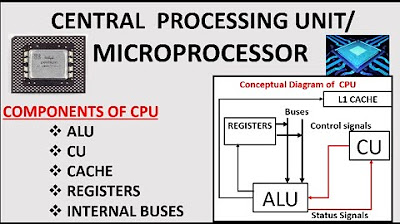Complements of Sets
Summary
TLDRThis lesson in Unit 5.3 covers the concept of the complement of sets. Starting with a universal set (U) and a subset (A), the complement of A, denoted as A prime, includes elements in U but not in A. The video explains key properties of complements: the intersection of A and A prime is empty, their union equals U, and the number of elements in A plus A prime equals the total in U. An example uses letters of the alphabet to illustrate these principles. The lesson is designed to clarify these set operations with practical examples.
Takeaways
- 🔢 The lesson focuses on the concept of complements of sets.
- 📋 A complement is defined as the set of elements in the universal set but not in subset A.
- 🌐 The universal set is represented by U and subset A is part of U.
- 📝 A prime (A') refers to the complement of A, symbolized with a tick mark.
- 🧮 Example: If U = {1, 2, 3, 4, 5} and A = {1, 3}, A' = {2, 4, 5}.
- ⚖️ The intersection of A and A' is the null set, meaning no common elements.
- 🔄 The union of A and A' returns the entire universal set U.
- 🔢 The sum of elements in A and A' equals the total number of elements in U.
- 🅰️ An example using the alphabet: A = letters in 'ambidextrous', A' = remaining letters in the alphabet.
- ✅ A and A' have no common elements and their union covers the entire alphabet.
Q & A
What is a complement of a set?
-The complement of a set A, written as A prime (A'), is the set of elements that are in the universal set U but not in set A.
What symbol is used to denote the complement of a set?
-The complement of a set is denoted by a prime symbol (A'), which is a small tick mark next to the set's name.
How is the universal set represented?
-The universal set is represented by the symbol 'U' and contains all the possible elements under consideration.
Can you provide an example of a set and its complement?
-If U is the set {1, 2, 3, 4, 5} and A is the subset {1, 3}, then A' would be the set {2, 4, 5}, as these are the elements in U that are not in A.
What is the intersection of a set and its complement?
-The intersection of a set and its complement is the null set (∅), meaning they have no elements in common.
What is the union of a set and its complement?
-The union of a set and its complement is the universal set U, as combining both gives back all the elements in U.
How do the number of elements in a set and its complement relate to the universal set?
-The number of elements in a set A plus the number of elements in its complement A' equals the number of elements in the universal set U.
Can you give an example with letters of the alphabet?
-If U is the set of all letters in the alphabet and A is the set of letters in the word 'ambidextrous', then A' would be the letters not in the word 'ambidextrous'. Together, A and A' contain all the letters of the alphabet with no overlap.
What are the properties of the complement of a set?
-The properties of a complement are: (1) The intersection of a set and its complement is the null set, (2) The union of a set and its complement is the universal set, and (3) The number of elements in a set and its complement together equals the total number of elements in the universal set.
What is the relationship between the set 'ambidextrous' and its complement?
-The set A of letters in 'ambidextrous' has 12 elements, and its complement A' has 14 elements, making a total of 26 elements, which corresponds to the total number of letters in the alphabet (U).
Outlines

Cette section est réservée aux utilisateurs payants. Améliorez votre compte pour accéder à cette section.
Améliorer maintenantMindmap

Cette section est réservée aux utilisateurs payants. Améliorez votre compte pour accéder à cette section.
Améliorer maintenantKeywords

Cette section est réservée aux utilisateurs payants. Améliorez votre compte pour accéder à cette section.
Améliorer maintenantHighlights

Cette section est réservée aux utilisateurs payants. Améliorez votre compte pour accéder à cette section.
Améliorer maintenantTranscripts

Cette section est réservée aux utilisateurs payants. Améliorez votre compte pour accéder à cette section.
Améliorer maintenantVoir Plus de Vidéos Connexes

Unit 2 Extracurricular Activities | Materi Bahasa Inggris kelas 7 SMP Bab 5 This Is My School

BTEC Applied Science - Unit 5 Chemistry - Free radical substitution in Alkanes

CPU and Its Components|| Components of MIcroprocessor

Chapter 5, Unit 1, School Building Bahasa inggris kelas 7 kurikulum merdeka

English for Change: Unit 5 Personal Money Management ~ Materi Bahasa Inggris kelas XI SMA

Radiano

GCSE Computer Architecture 2 - The CPU
5.0 / 5 (0 votes)
